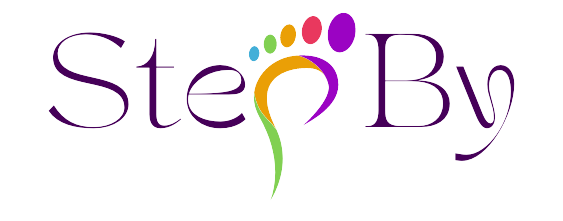Breathwork, a practice that has gained significant traction in recent years, encompasses a variety of techniques designed to enhance physical, mental, and emotional well-being through conscious control of breathing. This ancient practice, rooted in various spiritual traditions, has evolved into a modern therapeutic tool that individuals from all walks of life are beginning to embrace. By focusing on the breath, practitioners can tap into a profound source of energy and clarity, fostering a deeper connection to themselves and their surroundings.
The essence of breathwork lies in its simplicity; it requires no special equipment or extensive training, making it accessible to everyone. As individuals learn to harness the power of their breath, they often discover a pathway to greater self-awareness and emotional regulation. Whether seeking relief from stress, enhancing mindfulness, or simply cultivating a sense of calm, breathwork offers a versatile approach to personal growth and healing.
Key Takeaways
- Breathwork is a powerful practice that involves conscious control of breathing to improve mental, emotional, and physical well-being.
- The benefits of breathwork include stress reduction, improved focus and concentration, increased energy, and enhanced relaxation.
- The 5-minute breathwork sequence involves deep belly breathing, box breathing, alternate nostril breathing, energizing breath, and body scan and relaxation.
- Creating a calm environment is essential for effective breathwork, including finding a quiet space and eliminating distractions.
- Integrating breathwork into your daily routine can help you experience the full benefits of this practice and improve overall well-being.
Benefits of Breathwork
The benefits of breathwork are manifold, impacting various aspects of an individual’s life. One of the most immediate advantages is its ability to reduce stress and anxiety. By engaging in focused breathing exercises, individuals can activate the parasympathetic nervous system, which promotes relaxation and counters the body’s stress response.
This physiological shift can lead to a decrease in heart rate and blood pressure, creating a sense of tranquility that permeates daily life. In addition to its calming effects, breathwork can enhance mental clarity and focus. Many practitioners report improved concentration and cognitive function after engaging in breathwork sessions.
This heightened awareness can be particularly beneficial in high-pressure situations, allowing individuals to respond thoughtfully rather than react impulsively. Furthermore, breathwork has been linked to increased emotional resilience, enabling individuals to navigate life’s challenges with greater ease and composure.
Understanding the 5-Minute Breathwork Sequence

For those new to breathwork, a structured approach can be incredibly helpful. A five-minute breathwork sequence serves as an excellent introduction, providing a manageable yet effective way to experience the benefits of this practice. Each step in the sequence is designed to build upon the last, creating a holistic experience that nurtures both body and mind.
By dedicating just a few minutes each day to this practice, individuals can cultivate a sense of calm and clarity that extends beyond the session itself. The beauty of this five-minute sequence lies in its versatility; it can be performed anywhere and at any time. Whether one is at home, in the office, or even outdoors, these simple techniques can be seamlessly integrated into daily life.
As individuals become more familiar with the sequence, they may find themselves drawn to specific techniques that resonate with their unique needs and preferences.
Setting the Scene: Creating a Calm Environment
| Metrics | Value |
|---|---|
| Noise Level | Low |
| Lighting | Soft and Dim |
| Temperature | Comfortable |
| Air Quality | Fresh |
Before embarking on a breathwork journey, it is essential to create an environment conducive to relaxation and focus. The space should be free from distractions, allowing individuals to immerse themselves fully in the experience. Soft lighting, comfortable seating or lying arrangements, and soothing sounds can all contribute to an atmosphere that promotes tranquility.
Some may choose to incorporate elements such as candles or essential oils to further enhance the sensory experience. In addition to physical surroundings, mental preparation is equally important. Taking a moment to set intentions for the practice can help individuals align their focus and energy.
Whether the goal is to release tension, cultivate gratitude, or simply enjoy a moment of stillness, having a clear intention can guide the breathwork session and deepen its impact.
Step 1: Deep Belly Breathing
The first step in the five-minute breathwork sequence is deep belly breathing, also known as diaphragmatic breathing. This technique encourages individuals to engage their diaphragm fully, allowing for deeper inhalations and exhalations. As one inhales deeply through the nose, the belly expands outward, filling the lungs with air.
This process not only increases oxygen intake but also stimulates the vagus nerve, promoting relaxation throughout the body. Practicing deep belly breathing for just a minute can yield significant benefits. As individuals focus on their breath, they may notice a gradual release of tension in their bodies and minds.
This technique serves as an excellent foundation for subsequent steps in the sequence, as it establishes a rhythm that fosters mindfulness and presence.
Step 2: Box Breathing

Following deep belly breathing, practitioners can transition into box breathing—a technique often used by athletes and military personnel to enhance focus and calm nerves. Box breathing involves inhaling for a count of four, holding the breath for four counts, exhaling for four counts, and then holding again for four counts before repeating the cycle. This structured approach creates a sense of balance and stability within the body.
Box breathing not only helps regulate breath but also encourages mental clarity by anchoring attention on the counting process. As individuals engage in this rhythmic pattern, they may find that their thoughts begin to quieten, allowing for a deeper connection with their inner selves. The practice can be particularly effective during moments of stress or anxiety when clarity is needed most.
Step 3: Alternate Nostril Breathing
The third step in the sequence introduces alternate nostril breathing—a technique rooted in yogic traditions that promotes balance between the left and right hemispheres of the brain. To practice this technique, individuals use their thumb and ring finger to alternately close off one nostril while inhaling and exhaling through the other. This process not only calms the mind but also enhances focus and concentration.
As practitioners engage in alternate nostril breathing, they may experience a sense of harmony within themselves. The act of switching nostrils encourages a balanced flow of energy throughout the body, fostering emotional stability and mental clarity. This technique can be particularly beneficial for those seeking to cultivate mindfulness or enhance their meditation practice.
Step 4: Energizing Breath
The fourth step in the five-minute sequence focuses on energizing breath—a technique designed to invigorate both body and mind. This method typically involves rapid inhalations through the nose followed by forceful exhalations through the mouth. The quick pace stimulates circulation and increases oxygen flow, providing an immediate boost of energy.
Practitioners may find that engaging in energizing breath helps shake off feelings of lethargy or fatigue. This technique is particularly useful during midday slumps or moments when motivation wanes. By incorporating energizing breath into their routine, individuals can cultivate a sense of vitality that carries them through their day.
Step 5: Body Scan and Relaxation
The final step in the five-minute breathwork sequence is a body scan combined with relaxation techniques. This practice encourages individuals to bring awareness to different parts of their bodies while consciously releasing tension. Starting from the toes and moving upward toward the head, practitioners can visualize each area relaxing as they breathe deeply.
As individuals engage in this body scan, they may discover areas of tension they were previously unaware of. By acknowledging these sensations without judgment and allowing them to dissipate with each exhale, practitioners can foster a profound sense of relaxation and well-being. This final step serves as a gentle reminder to carry this sense of calm into daily life.
Integrating Breathwork into Your Daily Routine
Incorporating breathwork into daily routines can be transformative for individuals seeking greater balance and well-being. The beauty of this practice lies in its flexibility; it can be performed at any time—whether during morning rituals, midday breaks, or evening wind-downs. By dedicating just five minutes each day to breathwork, individuals can cultivate resilience against stressors while enhancing overall mental clarity.
To make breathwork a consistent part of daily life, individuals may consider setting reminders or designating specific times for practice. Creating a dedicated space for breathwork can also enhance commitment; having a designated area fosters an association between that space and relaxation. Over time, as individuals become more attuned to their breath and its effects on their well-being, they may find themselves naturally gravitating toward these practices whenever they need grounding or clarity.
Embracing the Power of Breathwork
In conclusion, breathwork offers a powerful tool for personal growth and emotional regulation that anyone can access with just a few minutes each day. Through techniques such as deep belly breathing, box breathing, alternate nostril breathing, energizing breath, and body scans, individuals can cultivate greater awareness of their bodies and minds while fostering resilience against stressors. As more people embrace this ancient practice in modern contexts, they discover not only its immediate benefits but also its potential for long-term transformation.
By integrating breathwork into daily routines and creating intentional spaces for practice, individuals can unlock the profound power of their breath—an ever-present resource for healing and self-discovery. Ultimately, embracing breathwork is an invitation to reconnect with oneself on a deeper level while navigating life’s complexities with grace and ease.
FAQs
What is breathwork?
Breathwork is a type of therapy that utilizes conscious breathing techniques to improve mental, physical, and spiritual well-being. It involves various breathing exercises and patterns to achieve different outcomes such as relaxation, stress reduction, and increased energy.
How can breathwork improve energy levels?
Breathwork can improve energy levels by increasing oxygen flow to the body and brain, reducing stress and anxiety, and promoting a sense of calm and focus. By practicing specific breathing techniques, individuals can stimulate the parasympathetic nervous system, which can lead to increased energy and vitality.
What are the benefits of a 5-minute daily breathwork sequence for energy?
A 5-minute daily breathwork sequence can help improve energy levels by providing a quick and effective way to oxygenate the body, reduce tension, and increase mental clarity. It can also serve as a powerful tool for managing stress and promoting overall well-being.
Are there any risks associated with breathwork for energy?
While breathwork is generally safe for most people, it’s important to practice it in a safe and comfortable environment. Some individuals may experience lightheadedness or dizziness when practicing certain breathing techniques, so it’s important to start slowly and listen to your body. If you have any underlying health conditions, it’s advisable to consult with a healthcare professional before starting a breathwork practice.
Can anyone practice breathwork for energy?
Yes, breathwork can be practiced by people of all ages and fitness levels. However, individuals with certain respiratory conditions or cardiovascular issues should consult with a healthcare professional before starting a breathwork practice. It’s important to start slowly and gradually increase the intensity of the practice to avoid any potential discomfort or adverse effects.



